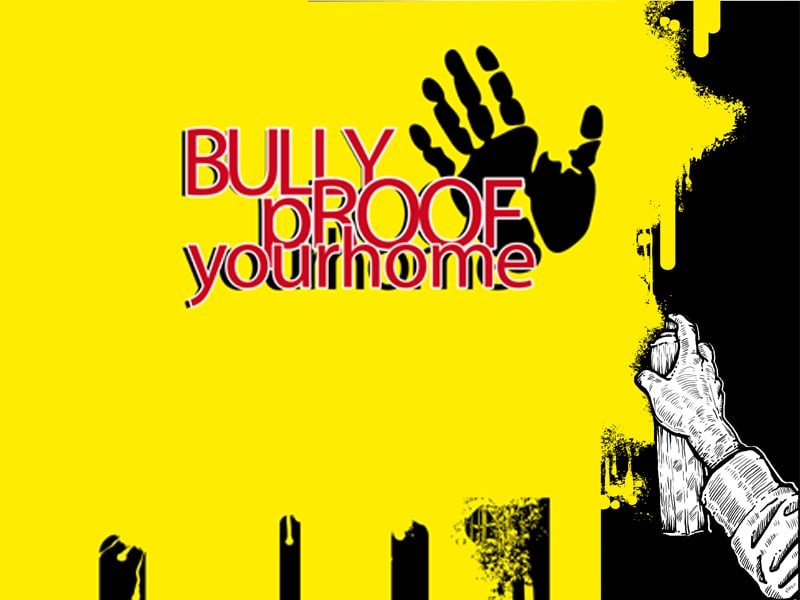
“I used to be overweight back in school and was almost always being made fun of by my class fellows,” says Sawera Shamshad, visiting faculty at University of Karachi and Iqra University. “My initial response was withdrawing into a shell, like most kids do. I hardly ever spoke or made friends with anyone. I became the quiet fat kid who would simply not respond to anything at all.” Being a teacher, Shamshad can spot similar cases in Pakistan. “I promptly check and chastise the misdoings of the bullies, making sure to give them a good piece of my mind,” she says.
For decades, bullying has been attributed with low self-esteem and depression. In adulthood, victims often experience mental health issues, anxiety and panic attacks. While the seriousness of the problem grows, the question remains: Can there be an end to bullying?
Is bullying avoidable?
“Bullying can never stop because it is ‘fun’ for bullies,” explains Saman Hayat, a student at Beaconhouse School System. “It’s not easy to solve these issues because most of them are not even reported to the teachers, and the students who bully, threaten to take revenge. But we can try by showing them the after effects of bullying, like the damage done to a child’s personality after being bullied.”
Nadia Attia, mother of three, points out that parents need to take more responsibility. “We need to teach children how to deal with mean people and how to help people that are being bullied from a young age,” says Attia. “It starts with simple conversations about feelings and then could go into role playing situations.” Shamshad agrees, saying that, “The role of the parents is giving their children utmost confidence in themselves because that is all it takes to stand up for oneself.”

“Bullying is about power and control. It is a form of abuse,” says psychotherapist Anees Fatima Hakim of Therapy Works. “There needs to be zero tolerance for bullying and firm boundaries need to be enforced.” Hakim also explains how bullying may become a cycle. “An older child will bully a younger one, then that child, to protect their self esteem, may go and bully someone even younger and weaker. Alternatively, some people turn their anger and rage inwards and harm themselves by drug abuse, binge eating or even suicide.”
While she confirms that bullies and victims can both be helped, Hakim also reiterates that neither punishment nor empathy works. “The bully’s behaviour is to keep people away from their own vulnerable selves,” says Hakim. “A bully will only allow people to get close to them if they feel safe. Then their socially unacceptable attributes can be channelized into strengths. For example, dominating behaviour can be turned into leadership qualities.” As an experienced psychotherapist, Hakim believes that a caring and safe environment can also repair childhood damage without ever having to seek professional help. “In therapy, trauma is processed by externalizing feelings and working through disturbances instead of suppressing what is painful,” she explains. “This can be done through talk therapy but also through expressive arts, in which feelings that may be hard to express verbally are expressed by slapping paint onto paper or using puppets to demonstrate anger.”
What is bullyproof?
Bullyproof is a highly regarded program in which students are taught social and emotional skills on how to deal with bullies, without becoming victims. While Pakistan is not far behind in adapting similar programs, in the West, Bullyproofing has become a part of school curricula. There are books, videos and websites available, which help parents and teachers tackle difficult situations and create a culture of kindness and unity.
“Many schools are now implementing programs that teach children how to tackle bullying,” says Rabia Pir Mohammed, a teacher in Karachi. “We take action, first by taking certain privileges away temporarily; but if bullying still continues, we call parents and take action accordingly. It starts at a very young age, children make groups and outcast certain classmates. They don’t play with them or invite them to parties, but this is where parents need to step in and ask why their child does not like the other?”
As teachers, Mohammed says they are trained to be observant and vigilant but what mothers don’t realise is that when they talk to their friends, their six-year-old child is sitting and listening to them. While schools can enforce similar programs to bullyproof their students, if parents don’t see the problem, children will not learn.
Take action
Early-age discipline at home is the best way to stop bullying. While parents and their children are encouraged to have open communication, there is no shield that will protect children from becoming victims of bullying at school. What we can teach children is to counteract the situation in the following ways:
1. Have regular conversations about school, friends and what worries your child.
2. Go to parent-teacher conferences regularly and ask for your child’s behaviour report.
3. Invite their friends and include yourself in their games.
4. Role-play with your child and their friends. Give them scenarios and ask how they would act.
5. Encourage your child to participate in extra-curricular activities.
6. Build confidence and teach them kindness and generosity to everyone.
7. Practice what you preach; if you’re not kind or honest, your child will also follow your footsteps.
Detect bullying
You can spot if your child is being bullied by the following:
- Demotivated to go to school
- Drastic change in sleeping or eating habits
- Frequent mood swings and anxiety
- Unexplained pain, bruises or cuts
- Missing or lost school items or money
- Hungry after returning from school
- Unwilling to discuss school stories
Published in The Express Tribune, Ms T, August 9th, 2013.
Like MsT on Facebook, follow @TribmagMsT on Twitter for your dose of girl talk.



1716998435-0/Ryan-Reynolds-Hugh-Jackman-(3)1716998435-0-165x106.webp)











1730706072-0/Copy-of-Untitled-(2)1730706072-0-270x192.webp)
COMMENTS
Comments are moderated and generally will be posted if they are on-topic and not abusive.
For more information, please see our Comments FAQ